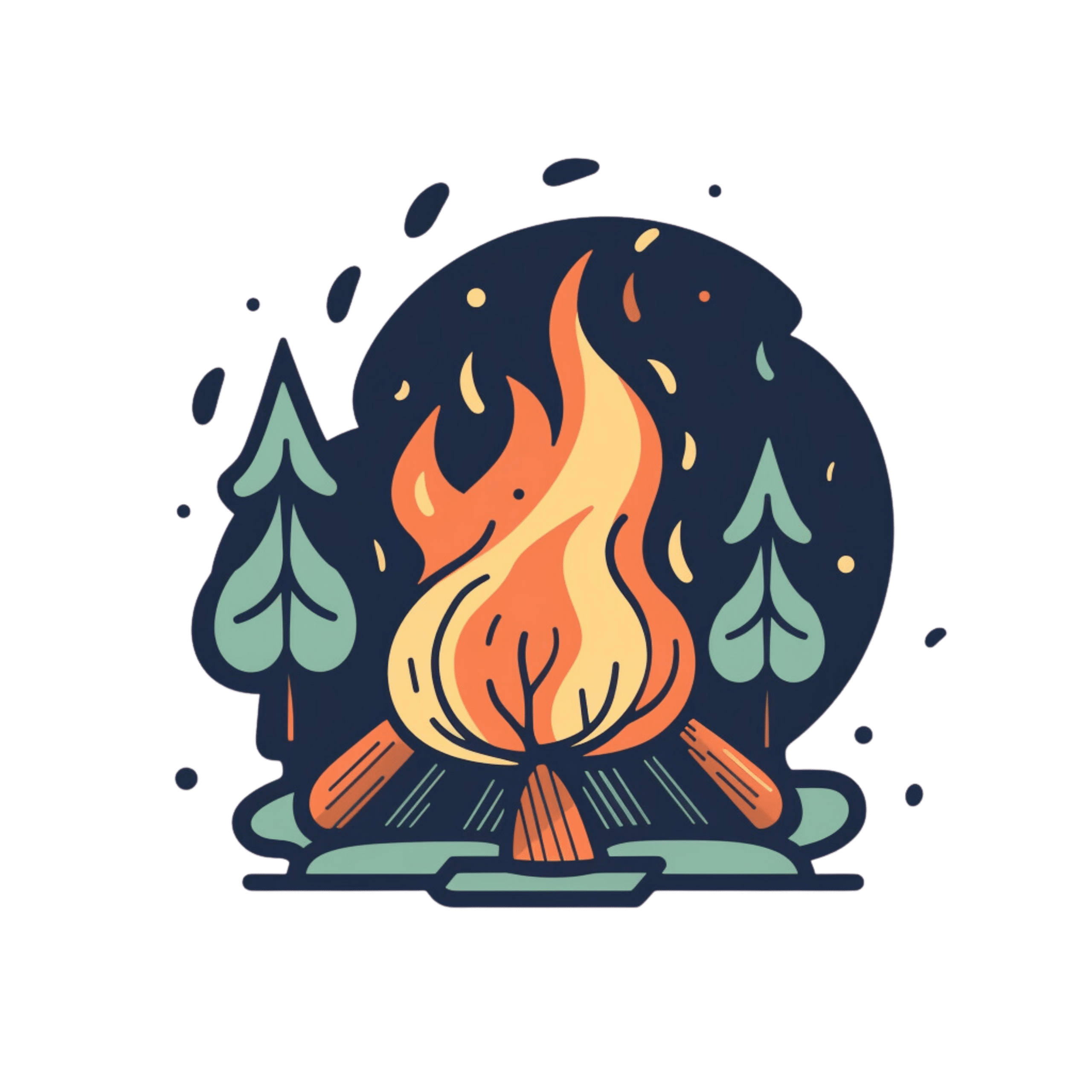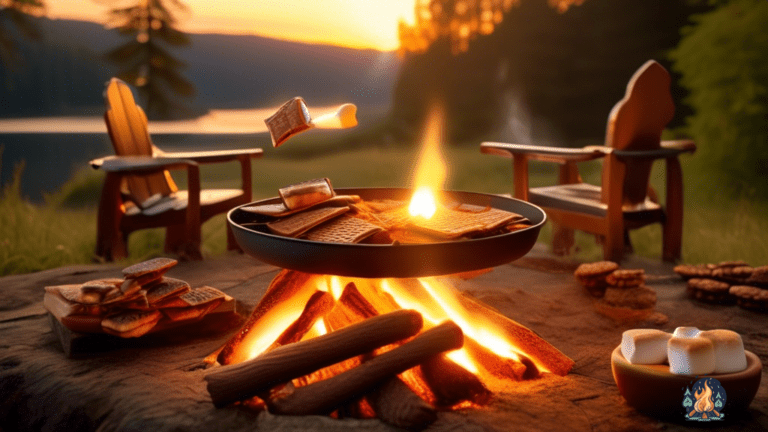Beginner’s Guide To Campfire Cooking Safety Tips
by Kevin Fairbanks • Updated: February 21, 2024
Discover the ultimate beginner’s guide to campfire cooking safety tips! Ensure your outdoor meals are both delicious and safe with these essential guidelines. Click here to learn more and cook up a storm on your next camping trip!

So, you’ve decided to embark on a camping adventure and try your hand at campfire cooking. It may seem like a fun and easy way to cook your meals while enjoying the great outdoors, but let’s not forget about the importance of safety.
While you may feel a sense of freedom and spontaneity around the campfire, it’s crucial to remember that safety should always come first.
In this beginner’s guide to campfire cooking safety tips, we’ll show you how to choose the right cooking equipment, set up a safe cooking area, properly handle and store food, and follow fire safety tips to prevent any accidents.
By following these simple guidelines, you can enjoy delicious campfire meals without putting yourself or others at risk. So, let’s get started and ensure that your campfire cooking experience is both enjoyable and safe.
Key Takeaways
- Importance of setting up a safe cooking area and following guidelines for creating it
- Precautions to prevent accidents while cooking over a campfire, including keeping a bucket of water or sand nearby
- Recommendations for sealing food in airtight containers and using sturdy, heat-resistant cooking equipment
- Importance of supervising children and pets around the fire, and fully extinguishing the fire before leaving the campsite
Choosing the Right Cooking Equipment
Now that you know the importance of campfire safety, you should choose the right cooking equipment to ensure a successful and enjoyable outdoor cooking experience.
When selecting your cooking gear, opt for sturdy, heat-resistant materials like cast iron or stainless steel. These materials can withstand high temperatures and are durable enough to last through many camping trips. Consider investing in a quality set of camping cookware that includes pots, pans, and utensils designed specifically for outdoor use.
As you browse through different cooking equipment options, think about the type of meals you plan to prepare over the campfire. A versatile camping stove or portable grill can be convenient for cooking a variety of dishes, while a Dutch oven is perfect for slow-cooking stews and casseroles.
Don’t forget to pack essential tools like tongs, spatulas, and oven mitts to handle hot cookware safely. By choosing the right cooking equipment, you’ll be well-equipped to whip up delicious meals in the great outdoors with ease.
Setting Up a Safe Cooking Area
To ensure a safe cooking area, you should clear a flat, open space away from trees, bushes, and other flammable materials. Give yourself room to move freely around the fire without worrying about accidentally touching something that could catch on fire.
Creating this open space will not only keep you safe but will also give you the freedom to fully enjoy the cooking experience without any unnecessary risks.
Once you’ve found the perfect spot, make sure to have a bucket of water or sand nearby to quickly extinguish any sparks or flames that may get out of control. It’s always better to be prepared and have a safety measure in place rather than scrambling to find a solution in the heat of the moment.
By setting up a safe cooking area with these precautions in mind, you can relax and focus on creating delicious meals over the campfire with peace of mind.
Properly Handling and Storing Food
Make sure you’re handling and storing food properly to avoid contamination and foodborne illnesses while cooking over the campfire.
Remember, when you’re out in the wild, it’s crucial to keep your food safe and fresh. Here are some tips to help you enjoy your campfire cooking experience without any worries:
- Seal your food in airtight containers to keep it safe from insects and animals.
- Use separate cutting boards and utensils for raw and cooked foods to prevent cross-contamination.
- Keep perishable items in a cooler with plenty of ice to maintain their freshness.
- Wash your hands thoroughly before and after handling food to prevent the spread of bacteria.
- Cook meats to the recommended internal temperatures to ensure they are safe to eat.
By following these simple guidelines, you can ensure that your campfire cooking adventure is not only delicious but also safe for you and your fellow campers.
Enjoy the freedom of cooking outdoors without any concerns about food safety!
Fire Safety Tips
Ensure you keep a bucket of water or a fire extinguisher nearby when enjoying your campfire to quickly address any potential hazards. Safety should always be a top priority when cooking over an open flame.
Before starting your campfire, make sure you have a clear area free of any flammable materials, such as dry leaves or branches. Keep a safe distance from the fire and never leave it unattended.
When cooking over a campfire, be mindful of the flames and always use long utensils to avoid getting too close to the heat. Avoid wearing loose-fitting clothing that could easily catch fire and always supervise children and pets around the fire.
Remember to fully extinguish the fire before leaving the campsite or going to bed. By following these simple fire safety tips, you can enjoy your campfire cooking experience without any worries.
Cleaning Up and Disposing of Waste
When cleaning up after your campfire, be sure to properly dispose of all waste materials to prevent environmental damage. This means picking up any trash, food scraps, or leftover supplies and placing them in designated trash bins or bags.
Leaving waste behind not only harms the environment but can also attract unwanted wildlife to the area. Take the extra time to clean up thoroughly and leave no trace of your presence for the next campers to enjoy the beauty of nature.
Additionally, if you used any disposable plates, utensils, or packaging during your campfire cooking, make sure to pack them out with you. Do not leave behind any non-biodegradable items that can harm the ecosystem.
Always follow the principles of "pack it in, pack it out" to ensure that you are leaving the campsite as pristine as you found it. By taking responsibility for your waste and disposing of it properly, you’re contributing to the preservation of the natural environment and helping to maintain the beauty of the outdoors for everyone to enjoy.
Frequently Asked Questions
How can I prevent wildlife from being attracted to my campfire cooking area?
To prevent wildlife from being attracted to your campfire cooking area, remember the saying, u0026quot;cleanliness is next to godliness.u0026quot; Keep your cooking area tidy, dispose of food scraps properly, and store food securely.
Are there any specific safety precautions to take when cooking with children around a campfire?
When cooking with children around a campfire, always supervise them closely, teach them fire safety rules, and establish a safe boundary. Keep hot objects out of reach, never leave the fire unattended, and always have a fire extinguisher nearby.
What should I do if I accidentally burn myself while cooking over a campfire?
If you accidentally burn yourself while cooking over a campfire, quickly cool the burn with cold water. Then, cover it with a clean bandage to protect it like a knight’s shield. Safety first, adventurer!
Are there any regulations or restrictions on campfire cooking in certain camping areas?
When camping, be aware of any regulations or restrictions on campfire cooking in certain areas. Check with park rangers or campsite officials beforehand to ensure you’re following the rules and keeping everyone safe.
How can I properly dispose of cooking grease and oil while camping to avoid environmental damage?
Properly dispose of cooking grease and oil while camping by letting it cool, then pouring it into a sealable container. Store it securely until you can dispose of it properly to avoid environmental damage.

Hi, I’m Kevin, a lifelong camping enthusiast and the voice behind Campfire Discoveries. From tent to RV to cabin camping, I’ve explored it all. Join me as we share stories and tips around the campfire, deepening our connection with the great outdoors.
Keep Reading
-
Must-Have Equipment For Campfire Safety
Discover the must-have campfire safety equipment to keep your outdoor adventures worry-free! Click here for essential tools and stay safe around the fire.
-
Irresistible Campfire Dessert Recipes For Sweet Tooths
Craving something sweet? Try these irresistible campfire dessert recipes that will satisfy your sweet tooth under the stars. Click here for mouthwatering treats!
-
Mastering Campfire Cooking: Techniques And Tips
Become a master of campfire cooking with our expert techniques and mouthwatering recipes. Click now to start your culinary adventure!



